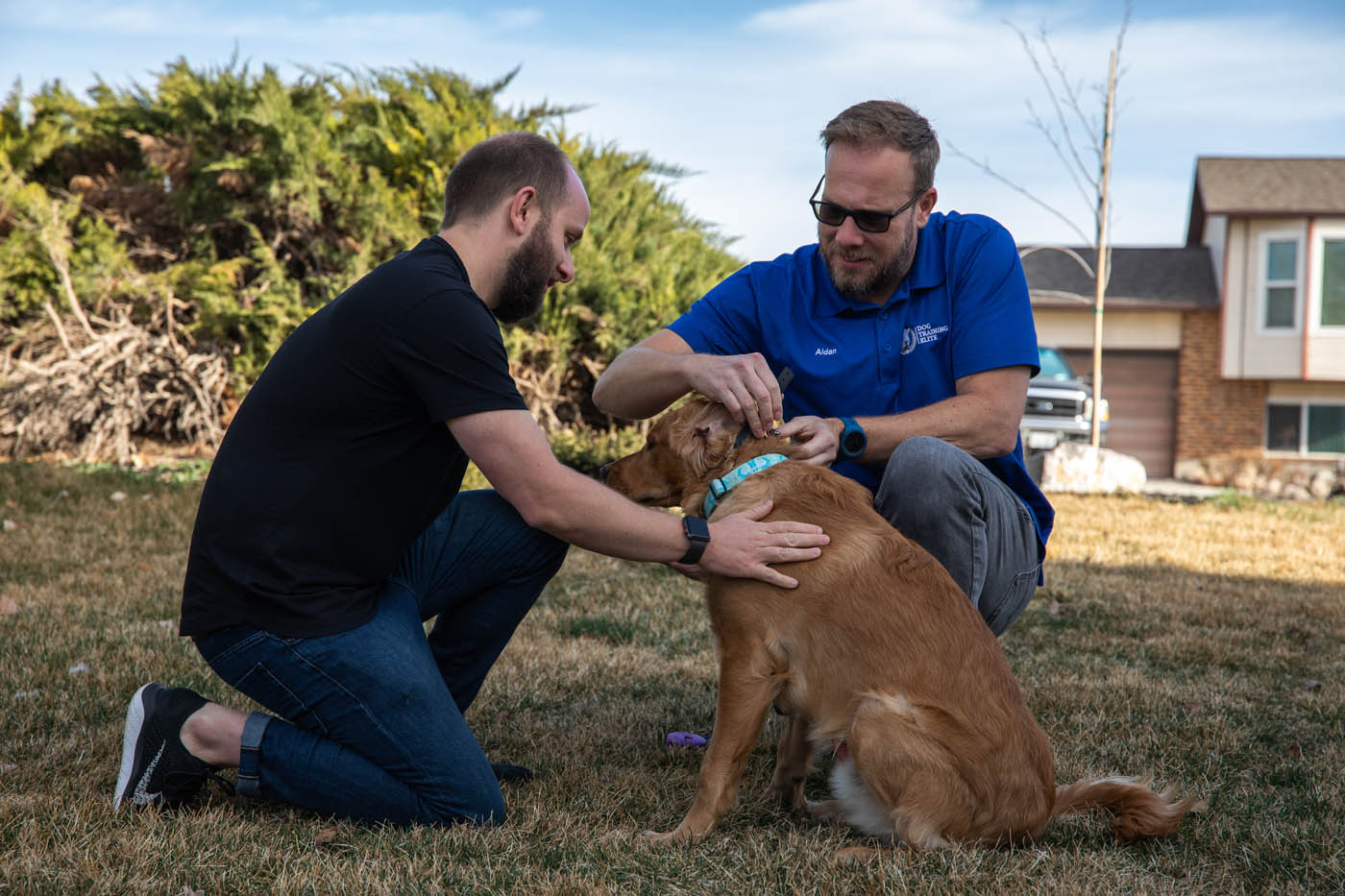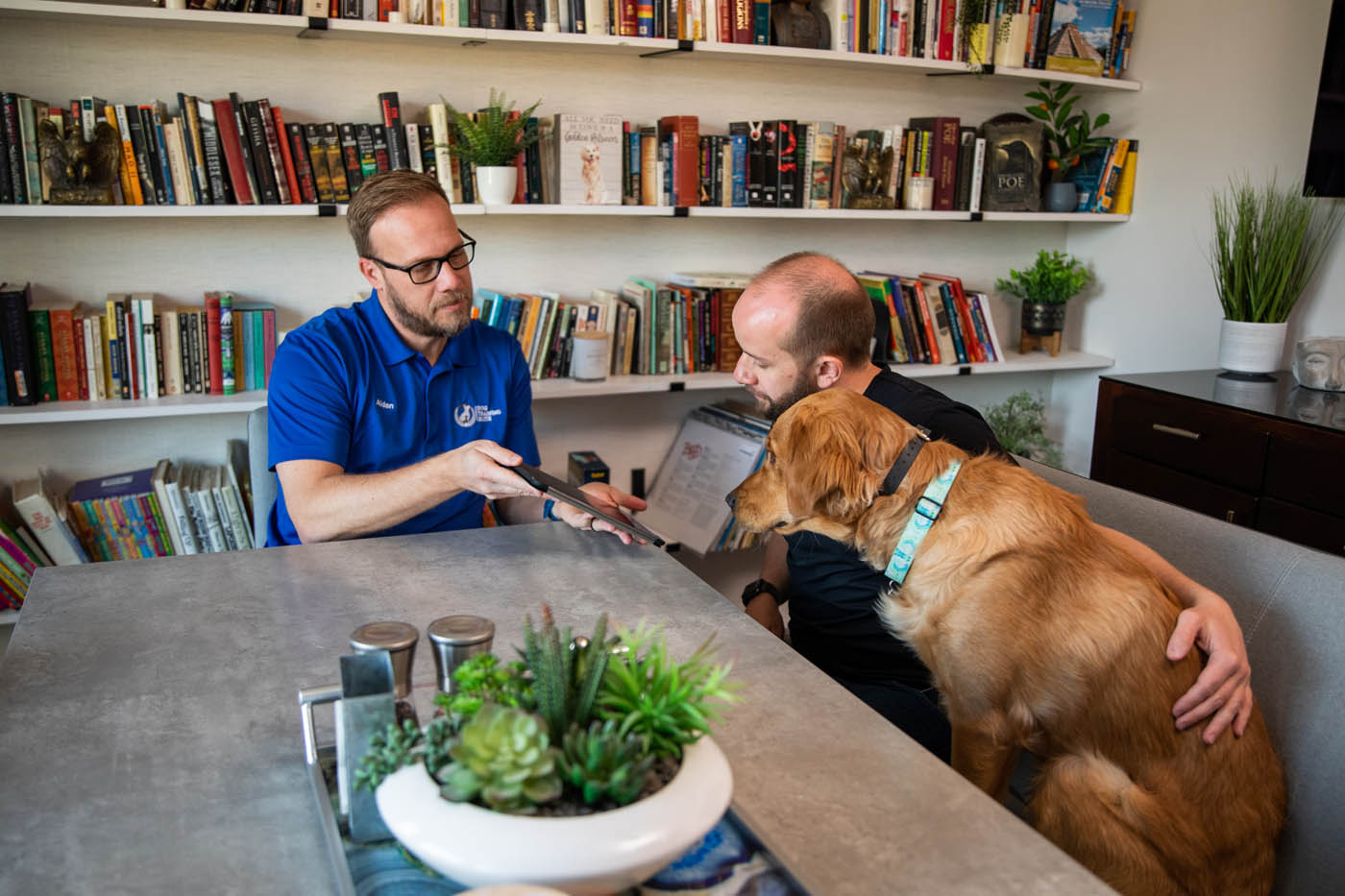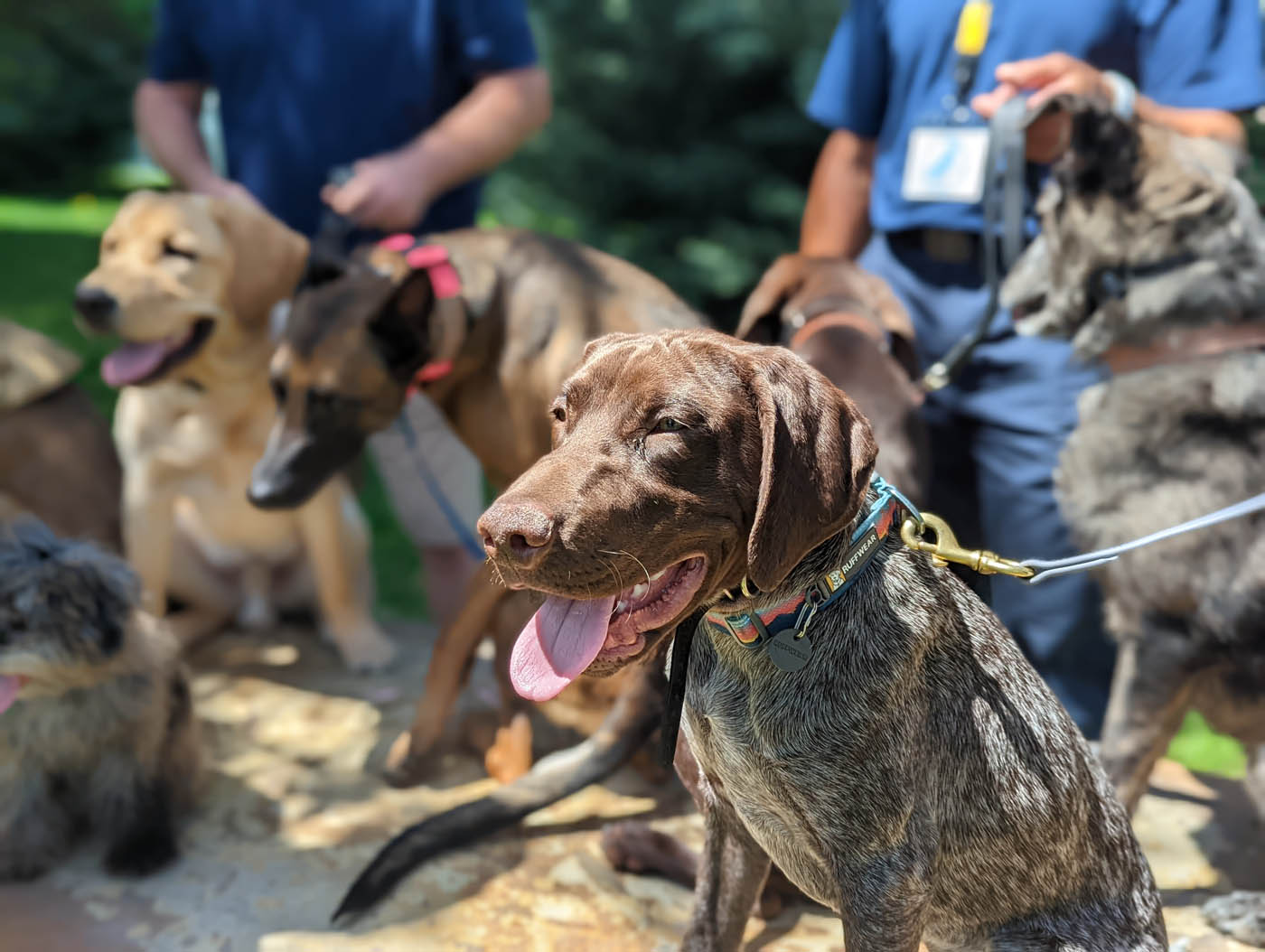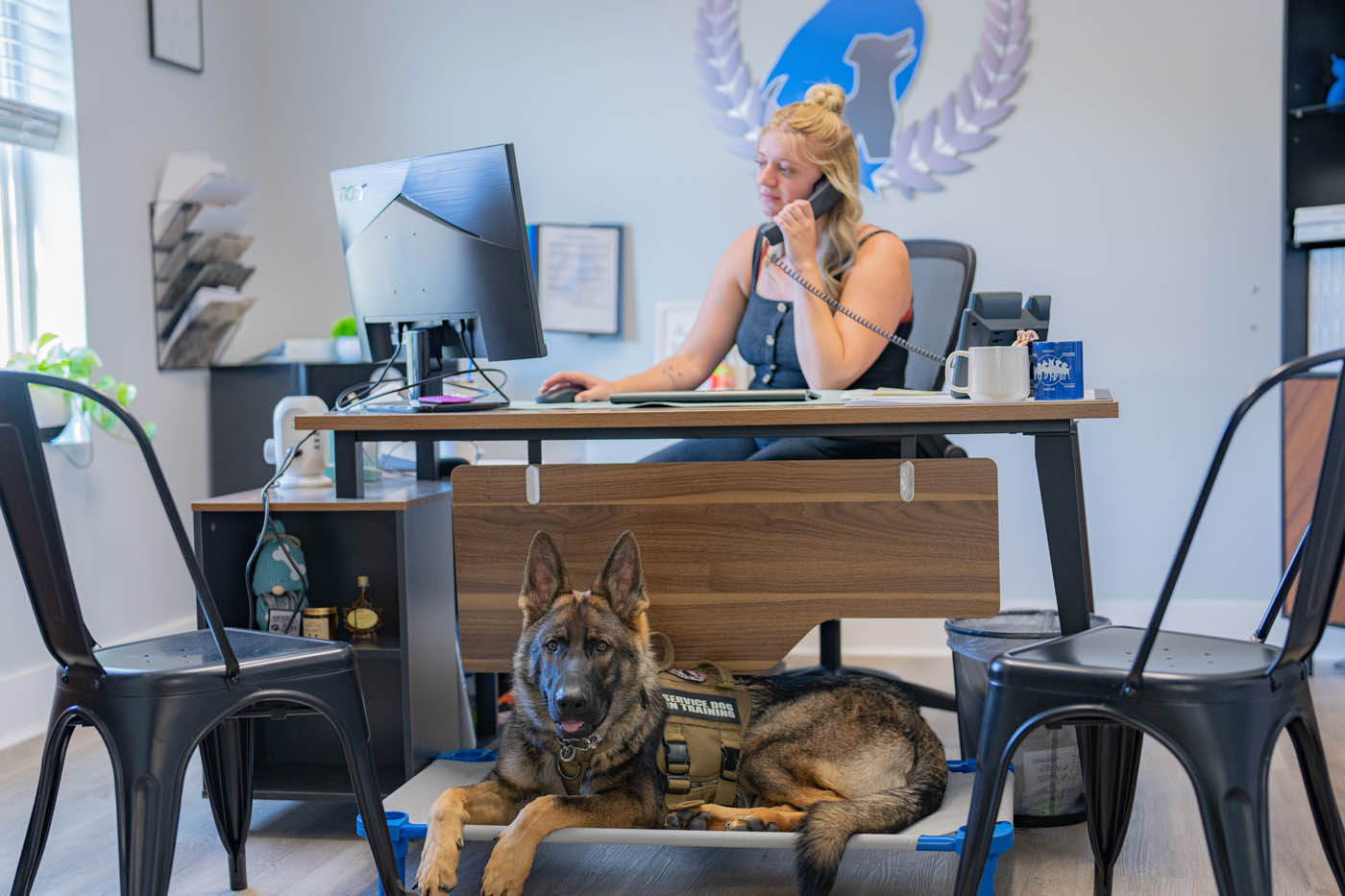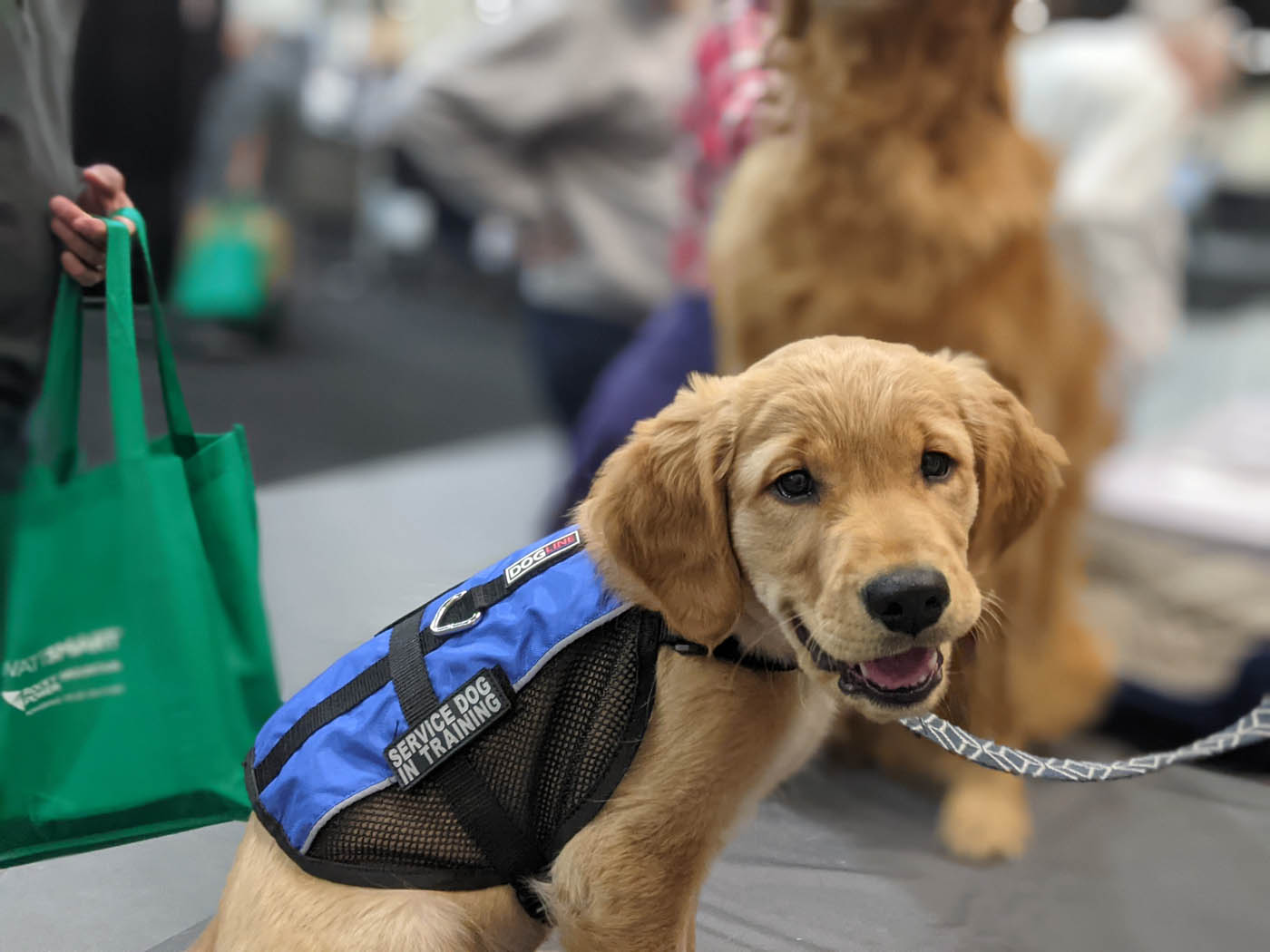How to Train a "Bad Dog": Real Solutions for Real Behavior Struggles
July 31, 2025
Worried about your dog's behavior? You're not alone. Read this article to learn more about why dogs may be exhibiting bad behavior and tips from real trainers at Dog Training Elite St. Louis on how to address common issues such as excessive barking, destructive chewing, or aggression.
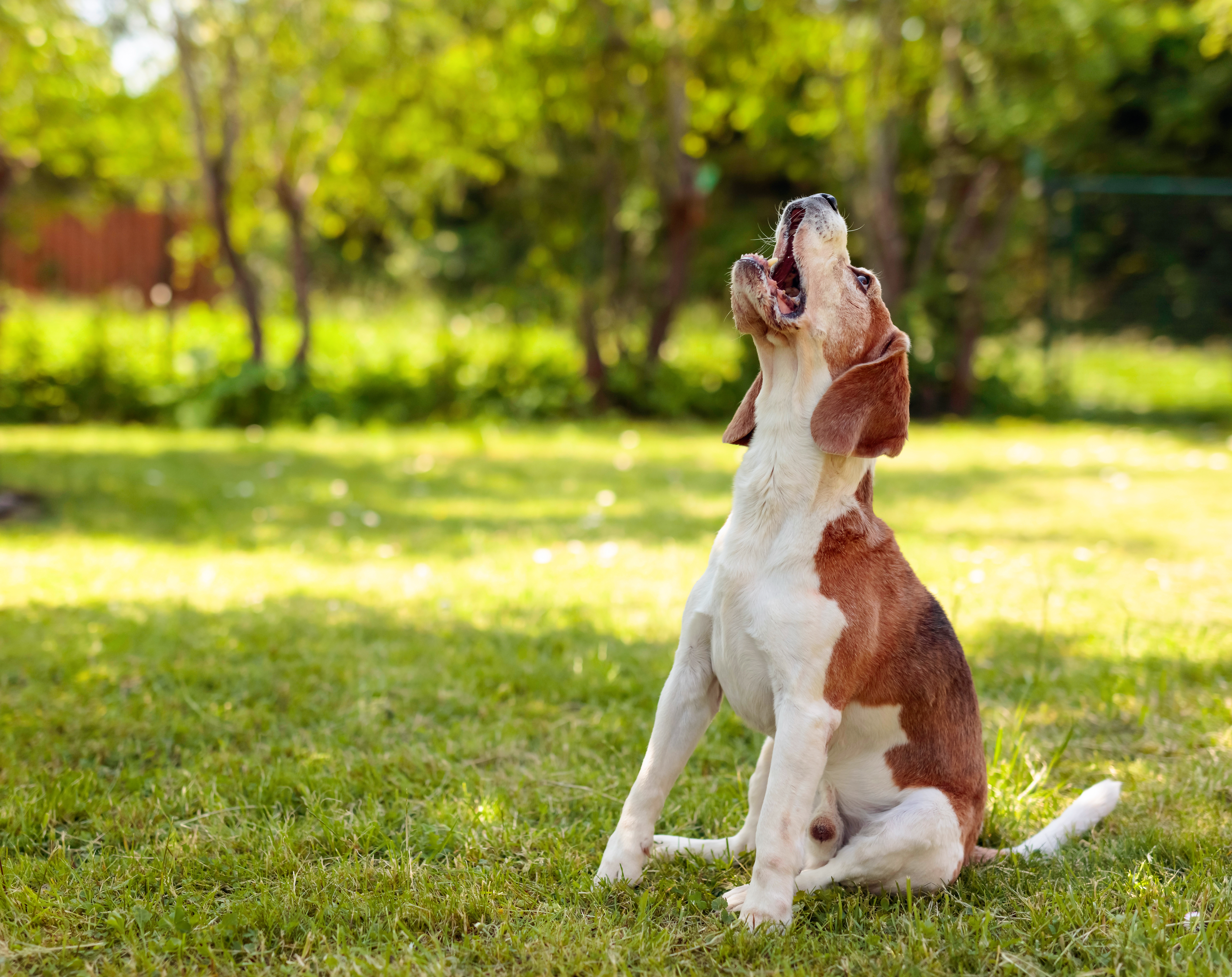
There Are No Bad Dogs
Many families tell us, “I think we just ended up with a bad dog.” But here’s the truth we wish every dog owner knew: there’s no such thing as a bad dog, just dogs who haven’t yet been given the right tools, training, and structure to navigate in the human world.
We’ve worked with hundreds of families and all kinds of dog breeds, backgrounds, and behavior struggles. Some dogs were labeled “untrainable” or “aggressive.” Others were driving their owners crazy with barking, pulling, or destructive habits. But when we assess the situation, we usually find the same thing: a smart dog trying to navigate a human world without clear rules.
If you’ve been wondering how to train a bad dog or are feeling stuck with your own dog’s behavior, you’re not alone. This blog will cover what causes behavior issues, how to begin working through them, and why it’s never too late for your dog to make progress.
Why Dogs "Act Out"
Most behavioral issues aren’t defiance; they’re communication. Your dog is doing the best they can with the information they’ve been given. Our job is to give them better information.
Here are a few reasons your dog might be struggling with behavior:
- Lack of Socialization: Many dogs weren’t exposed to new environments, people, or animals early in life. That lack of exposure can lead to fear or overreaction later, especially in busy places or unfamiliar situations.
- Separation Anxiety Struggles: If your dog panics when left alone, it may be a sign they’re unsure how to self-regulate without you. This can result in chewing, barking, or other anxious behaviors, especially after major life changes.
- Not Enough Stimulation: We see this often with smart, high-energy breeds. If your dog isn’t getting physical and mental stimulation, they’ll find an outlet for their energy, and you probably won’t like it.
- Inconsistency: Many families unknowingly send mixed messages, sometimes allowing a behavior and other times correcting it. Dogs thrive on routine. Clear, consistent boundaries build trust and are the foundation for faster learning.
- Past Negative Circumstances: Dogs with a rough history, whether a stressful environment, lack of leadership, or negative experiences, may act hesitant, reactive, or even defensive. They’re not broken. They just need time, leadership, and consistency.
- Breed-Specific Behaviors: Every breed was developed with a purpose, and those instincts still show up today. Herding dogs may try to control movement by nipping or circling. Guardian breeds may be naturally wary of strangers. Sporting breeds often have a strong drive to chase or retrieve. These tendencies aren’t problems; they’re part of what makes your dog who they are. With the right structure and redirection, these instincts can be channeled in positive ways.
Changing Behavior Starts with Understanding
Imagine how much easier life would feel if you could predict what your dog is going to do, and why. Once you understand the “why,” you can start shifting behavior in a positive direction.
Barking
Excessive barking is one of the most common struggles we see. Whether your dog barks at noises outside, people at the door, or just for fun, it’s frustrating. But it’s also fixable.
- Teach a “Quiet” Cue: Timing is everything. Reward your dog the moment they stop barking, so they begin to connect silence with praise or a treat.
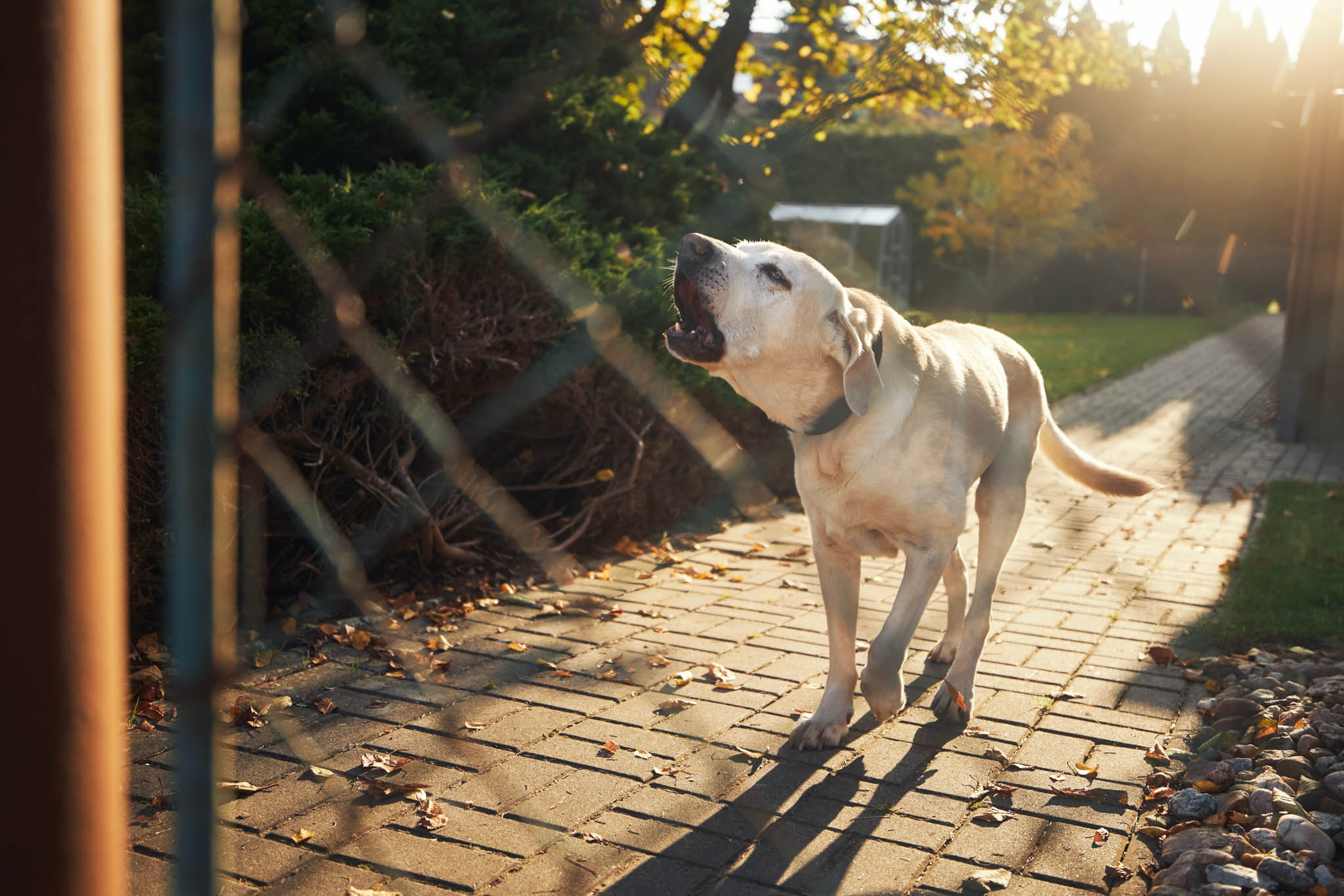
- Get Them Busy: A dog with a job barks less. Daily walks, sniff games, obedience work, and puzzle toys can dramatically cut down on boredom barking.
- Desensitize Triggers: Barking at the mailman? Doorbell? Other dogs? We’ll show you how to expose your dog to those things in a structured, calm way so they learn to stay relaxed.
Chewing
Chewing is normal, but destructive chewing doesn’t have to be. If your dog is eating shoes, furniture, or drywall, it’s time to redirect.
- Offer Legal Chews: Stock up on tough chew toys and rotate them regularly to keep them exciting. If they grab something off-limits, calmly offer a better option.

- Manage Their Space: Prevention goes a long way. If your dog can’t reach your running shoes, they can’t chew them.
- Give Them a Job to Do: Chewing often comes from boredom. A mentally satisfied dog is far less likely to chew up your living room.
Aggression
We know how emotional this one is. Many families come to us scared, ashamed, or at their wits’ end. But here’s what we want you to know: aggression is a signal, not a personality.
- Use a Muzzle (The Right Way): Muzzle training done right can be empowering. It helps keep everyone safe, and it gives you the confidence to work your dog through tough situations in public or at home.
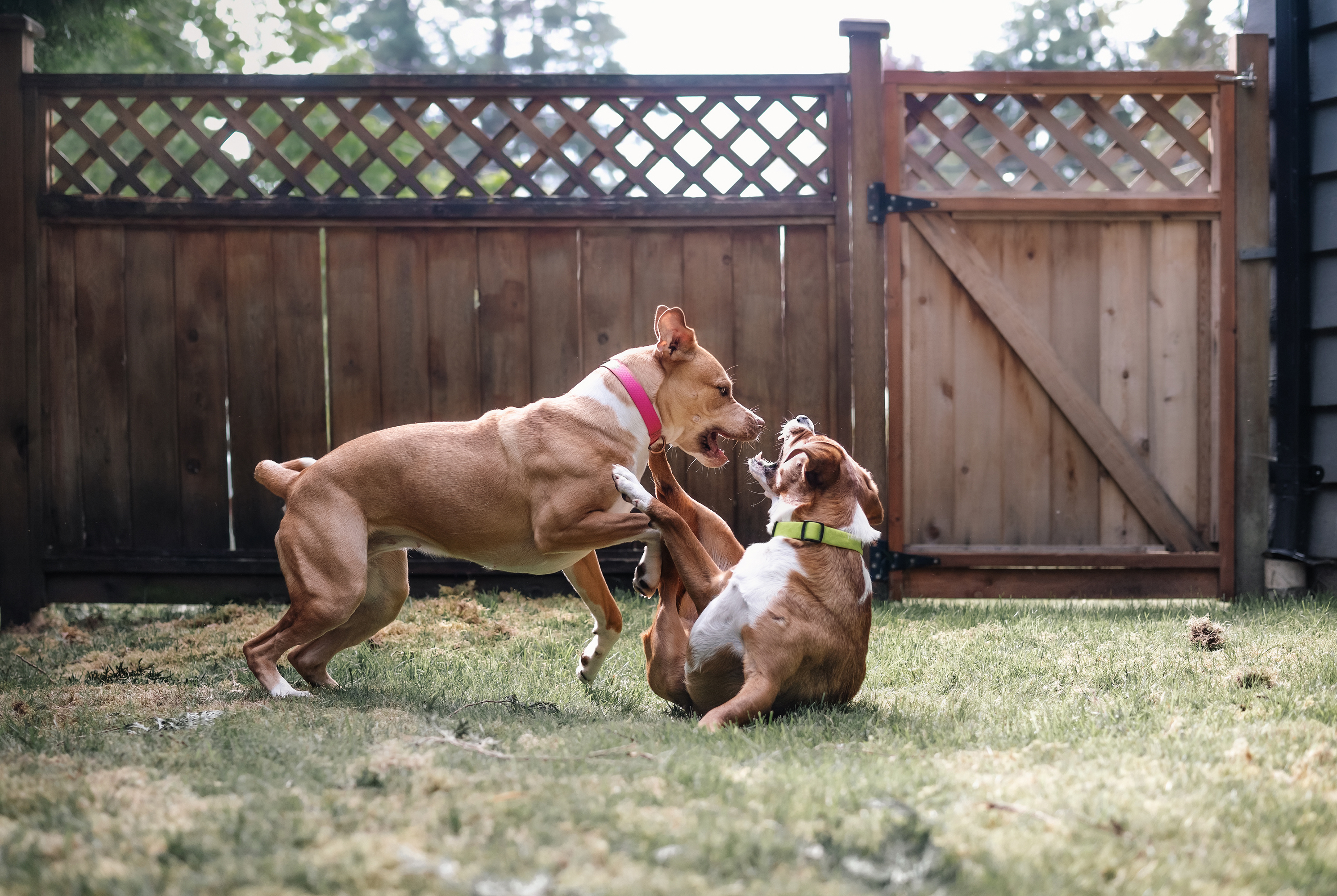
- Teach a New Response: We’ll help you pinpoint what sets your dog off and guide you through step-by-step training to replace those outbursts with calm, controlled behavior, even in situations that were once challenging.
- Bring in Professional Help: For dogs showing signs of aggression, working with a qualified trainer is essential. We’ll help you understand what may be driving the behavior and create a practical, realistic plan to manage it.
Jumping
We get it. You walk through the door, and boom, your dog launches into orbit. While jumping is usually meant as affection, it’s not a behavior most people enjoy.
- Train a Sit, Place, and/or Off Command: Reward calm greetings. Every time your dog chooses to sit or stay grounded, let them know that’s what you want.
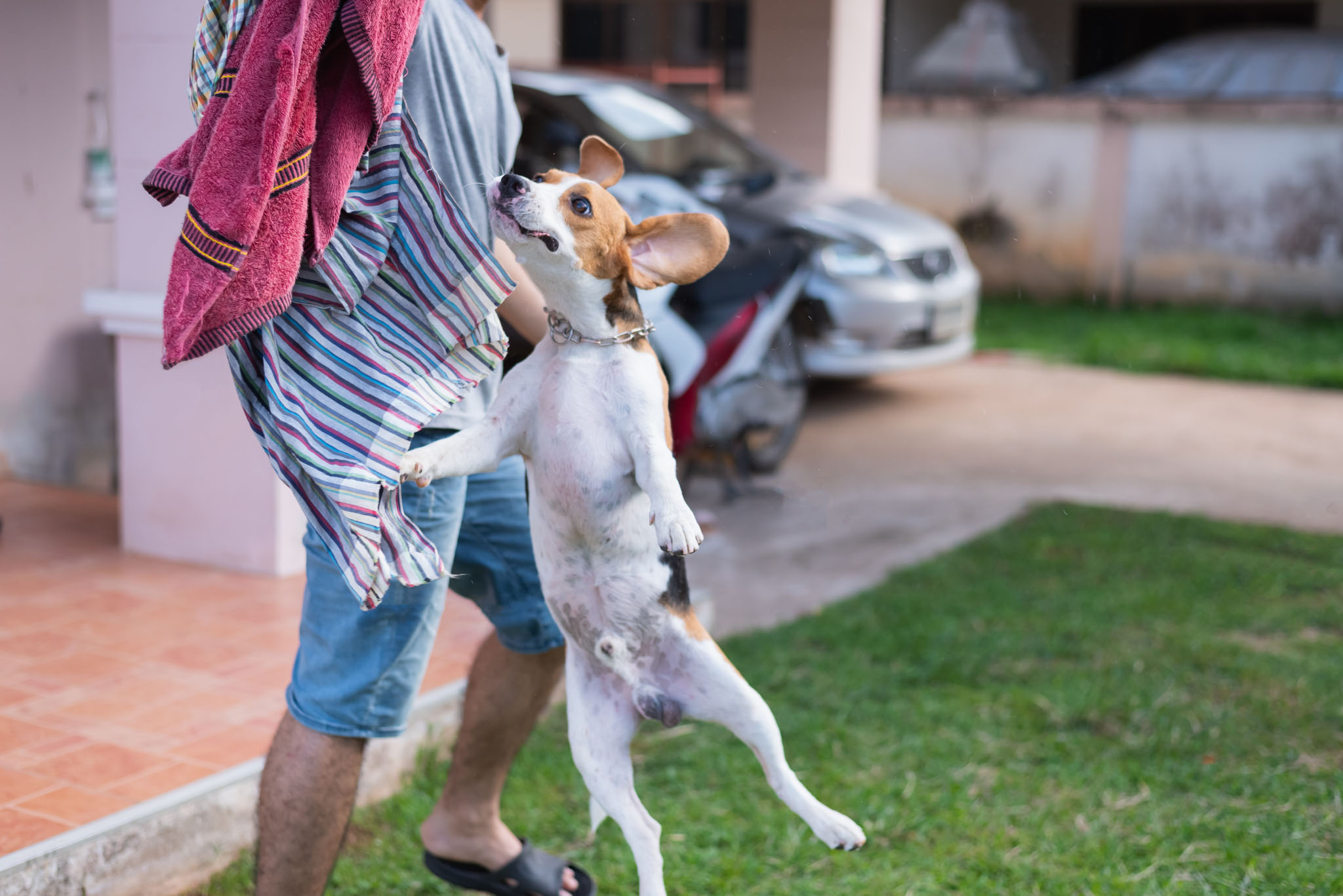
- Move Into Them: Instead of turning away, take a step forward. Most dogs will naturally back up, which teaches them that jumping ends the interaction rather than encourages it.
- Consistency Counts: Everyone in your dog’s life, from family to guests, needs to follow the same rule: no attention for jumping, and plenty of pets for calm greetings.
Leash Pulling
Leash pulling turns even a short walk into a power struggle. But it’s incredibly fixable, and loose-leash walking is actually a fun thing to train!
- Use the Right Tools: A well-fitted training collar, such as a martingale, slip lead, prong collar, or head Halti, gives you better control and clearer communication.
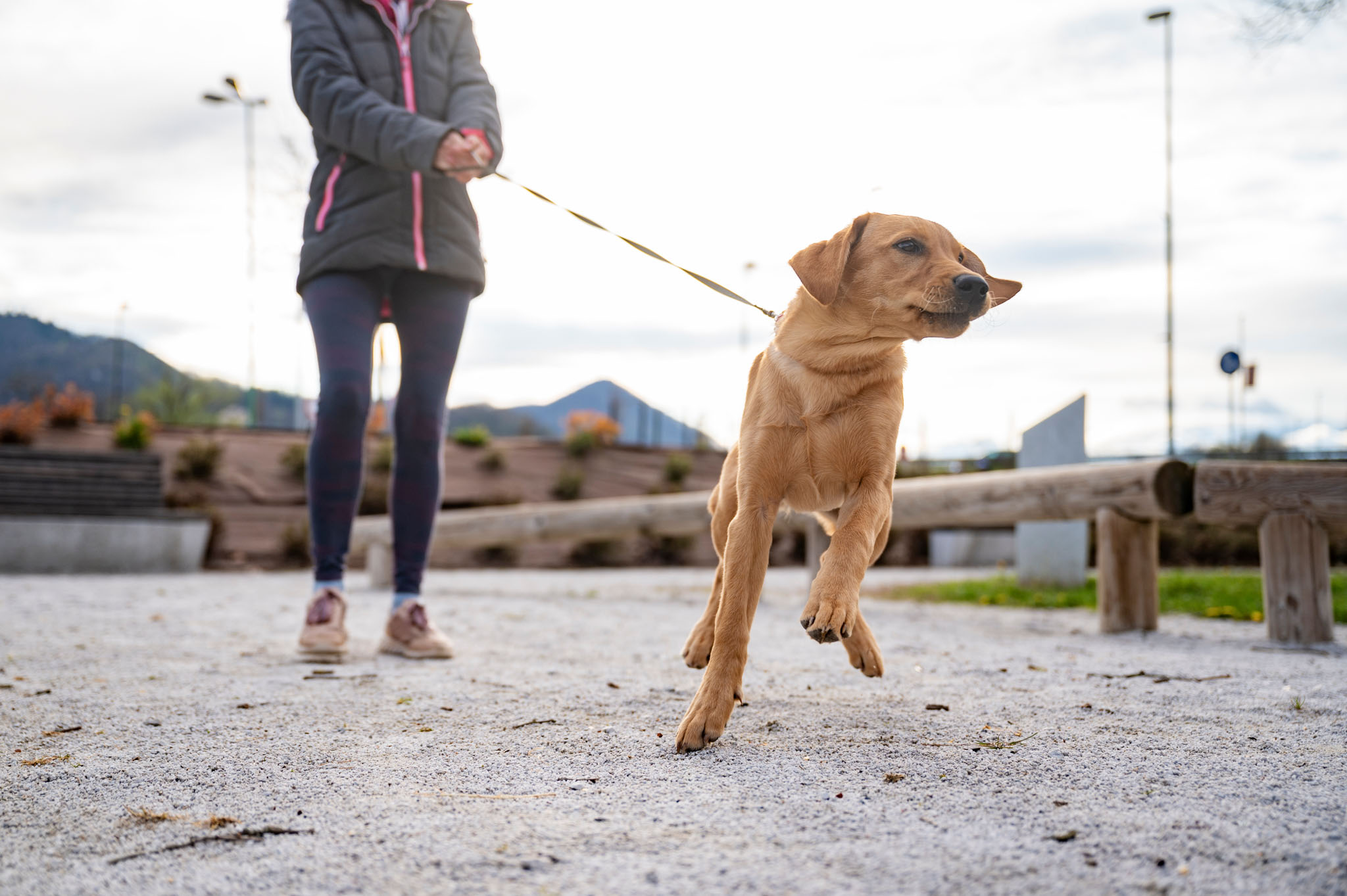
- Teach Your Dog to Choose You: When your dog pulls, stop. When they come back to your side, reward them. Over time, they’ll learn that walking beside you gets them everything they want.
- Make You the Fun Part of the Walk: Change direction, mix it up, use treats, and stay engaged. Make following you more interesting than pulling ahead.
Resource Guarding
Does your dog freeze or growl over toys or food? That’s resource guarding, and while it’s rooted in fear, it can be addressed with the right strategy.
- Trade Up: Never yank things away. Instead, teach your dog that giving something up means something better is coming.
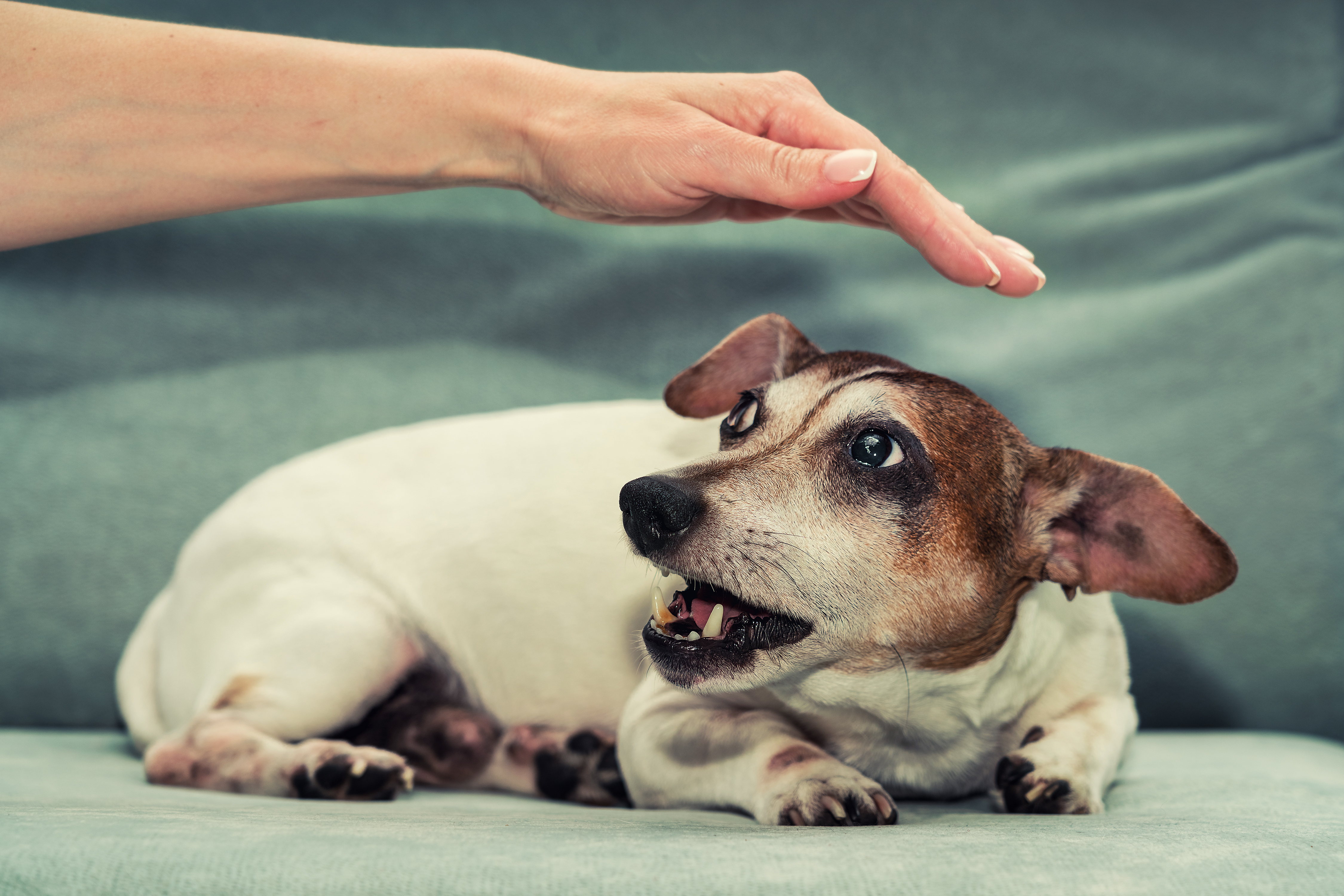
- Hand Feed: Feeding from your hand builds trust and helps reduce tension around meals.
- Don’t Escalate the Situation: Avoid grabbing or forcing your dog to release something; it only teaches them to guard harder next time.
You’re Not Alone, And It’s Not Too Late to See Better Behavior
If you’ve been wondering how to train a bad dog, you’re in the right place.
Better behavior starts with consistent training, clear expectations, and the right support. Most dogs can learn to listen better, stay calmer, and respond more predictably once they know what’s expected.
At Dog Training Elite, we specialize in obedience training , behavior modification , and real-world results. Whether your dog is barking nonstop, pulling on the leash, guarding food, or making life harder than it needs to be, we’ll help you build a practical plan and take it one step at a time.
We work with families all across St. Louis, MO, and we’d love to help you too. If you're ready to take the next step, reach out today to schedule your free in-home consultation. We’ll meet your dog, talk through your goals, and build a plan that makes sense for your home and your life.
Let’s get you back to enjoying your dog again, because life really is better with a trained dog.
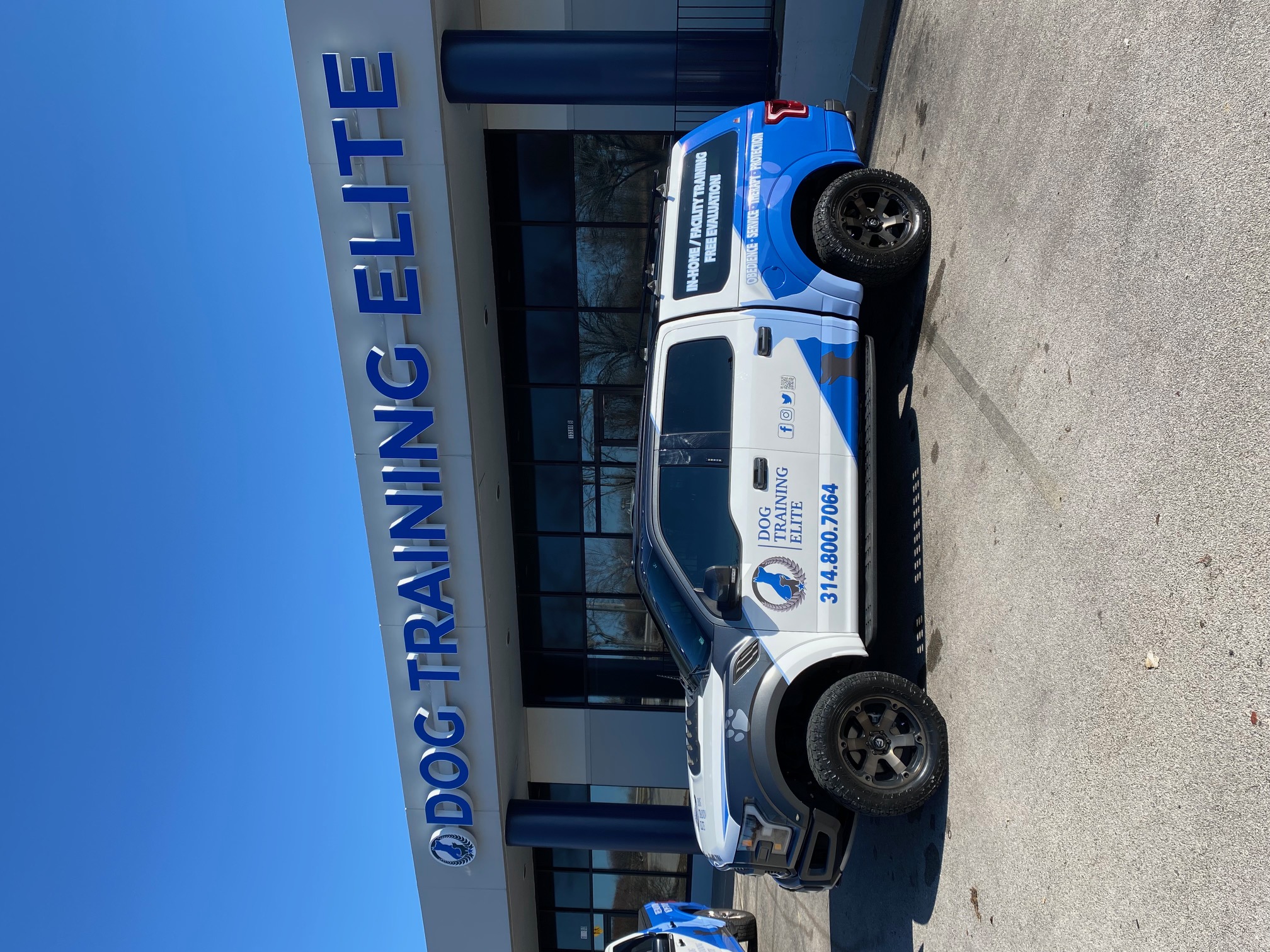
Dog Training Elite St. Louis
Get Your Free Assessment
You and your canine companion really can have it all. See how easy it can be to become a member of the elite pup society by requesting a free consultation today!
